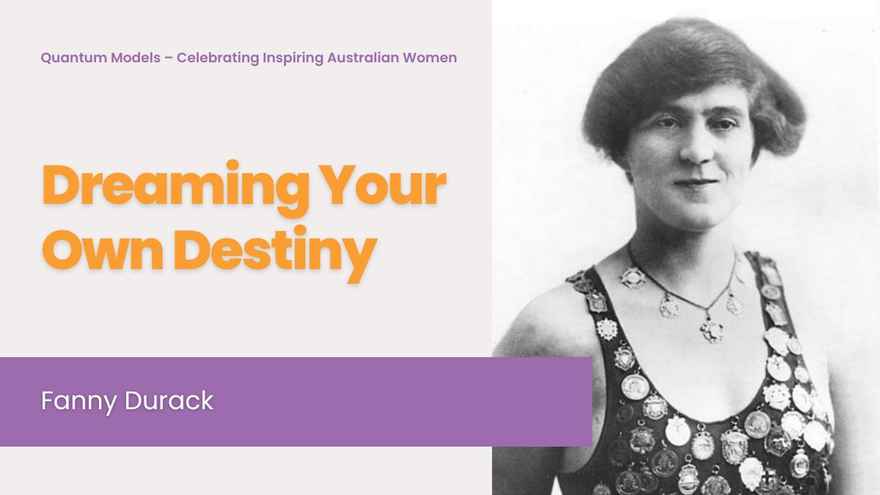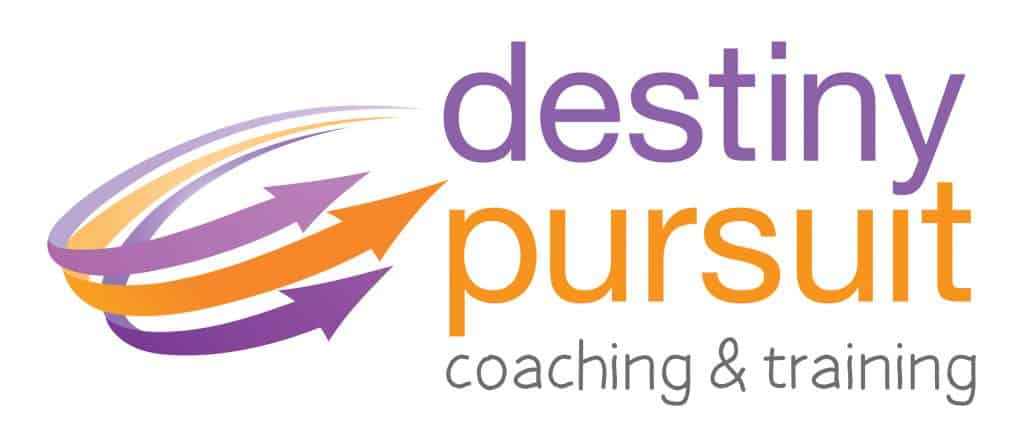Dreaming Your Own Destiny (Cause versus Effect) - Fanny Durack

“Some people see things as they are and say, why? I dream things that never were and say, why not?” John F Kennedy (paraphrasing George Bernard Shaw)
It is often in the most defining moments of life that we confront the challenge of moving beyond how things are now into the uncertain space of what could be instead. And it is precisely in these defining moments when we are determining our own destiny that we get the opportunity to choose to be at cause. That is, to accept that we do have a choice and that we are responsible for our choices; or, be at effect – and blame our situation onto some external circumstances which we believe are beyond our control and influence, thus becoming a victim of our circumstances.
Fanny Durack
Being a victim was not the choice that Fanny Durack made when she began her journey to become the first Australian woman to bring home an Olympic gold medal. Her journey to glory started in the surf at a Newcastle beach in the late 1800’s where Fanny, who was 9 years old at this time, got into difficulties. This defining incident inspired her and, in that moment she chose to be at cause. Fanny then set about learning how to swim and she did, like no other Australian woman before her.
The world was different then and swimming was a pursuit that was considered fraught with risk to women because it required attire that ‘revealed their body shape’ and ‘threatened their modesty’. To protect women from what was believed to be the uncontrollable urges aroused in men exposed to women in such attire, segregated swimming was the order of the day, meaning men and women could not occupy water at the same time. Women were given much less time in the water – often only two hours per week and in competitions men and women weren’t even permitted to swim on the same program, and females couldn’t even be watched in competition by men.
This environment filled with constraints and barriers was a serious impediment to women’s training and stifled the growth and popularity of women’s swimming. But then there were the few who dreamed things that never were and said – why not!
So, with society’s limitations squarely upon her, the rebellious Fanny became even more determined to find a way to the top. Her method was to remain singularly focused on her outcome and disregard the restrictive authority figures who sought to contain her talents. With her training partner and close friend, Mina Wylie, beside her, and the encouragement from Mina’s father (who owned the Coogee baths) the two friends trained and competed where they could.
By early 1912, this had resulted in Fanny setting world records in the 100 and 220 yard freestyle events in local competitions. When in the lead up to the 1912 Stockholm Olympic Games the Olympic committee made the historic decision to include two women’s races in swimming the opportunity was open for Fanny Durack to realize her dreams. Imagine the stunned shock when despite her world record successes she was left out of the Olympic Team selected to go to Stockholm. Apparently the Australian Olympic committee couldn’t afford to send women! This outrageous decision led to loud public calls for her to be allowed to compete in that year’s Stockholm games. And whilst others remained determined to oppose Fanny’s inclusion on the team, the public was more enlightened and saw the situation very differently.
Eventually with the rising public outcry, the ridiculousness of the ban from competing was seen for what it was and it was overturned. A small number of women were allowed to compete – but only if they could pay their own way. The men? Well, they were funded.
The public support continued for Fanny to represent Australia at the Olympics and the money for travel and participation in the games was raised by public donation meaning Fanny was set to go. Wonderful! But now – what to wear? Women’s swimming costumes were a source of acrimonious debate in 1912. Neck to knee? Neck to ankle? Sleeves? If so, what length? Finally a design was settled upon – a unitard with long stockings attached. However, the Australian suit was, of course, made of wool. Its absorption rate being much greater than the suits coming from countries not riding on the sheep’s back meant Fanny had to carry much more weight than her rivals.
Fanny had the support of her people and she knew that despite barriers that had been constantly placed in her way by some, in the end there was only one way to silence her critics. Fanny won her heat – in world record time. She went on to win the final claiming Australia’s first ever women’s Olympic gold medal.
Fanny Durack was another Australian woman who chose to live her life at cause – seeing the external obstacles as nothing more than an illusion she followed her own internal truth, dreaming her own destiny. From the moment she chose to swim, she chose to be responsible for her own outcomes she pursued the training, the support, the competitions and experiences that would fulfill her dream. And whilst her talent was always there it was her determination, fortitude, flexibility and persistent resilience that finally delivered her the universal applause so well deserved.
Being at cause not only delivered the results for Fanny Durack, it also brought with it the added bonus of breaking new ground for Australian women in sport.
The concept of being at cause versus being at effect is a fundamental principal that underpins the practice and training of NLP. Whilst it may sound like a relatively simple concept applying this principle to our everyday lives can prove to be a bit challenging, a challenge that is made easier with the right support, guidance, training and action. It is also the path to personal power – for those of us who do wish to pursue our own destiny dreaming of things that have never been, yet.
Make today your day!
Cheers, Joanne
Joanne Clark
Joanne Clark is an Internationally accredited Master Trainer of NLP who has been delivering NLP training since 2011. Being on her feet in front of training rooms is where Jo loves to be and her passion for inclusive and immersive training that delivers outstanding learning outcomes is apparent to everyone in her training rooms. On average Jo delivers 140 days of training per year in addition to online webinars, guest speaker events and group coaching.
“NLP is at the core of all my training and coaching, it is at the core of who I am, how I interact and connect with people. I am absolutely passionate about spreading the NLP tools across the planet as I endeavour to support Robert Dilts’s vision of Creating a world to which people want to belong.” Joanne Clark
Certified Master Trainer of NLP; Master Practitioner NLP, Hypnotherapy & Matrix Therapies; Performance Coach; Cert IV Coaching; Advanced Practitioner in Coaching; Cert IV in Business; BA(Hons); Majors in Sociology and Psychology; Parent Education Leadership Training (PELT) Certificate; Mother of four children; Private Pilot (PPL); Diploma in Life Coaching


0 comments
Leave a comment
Please log in or register to post a comment